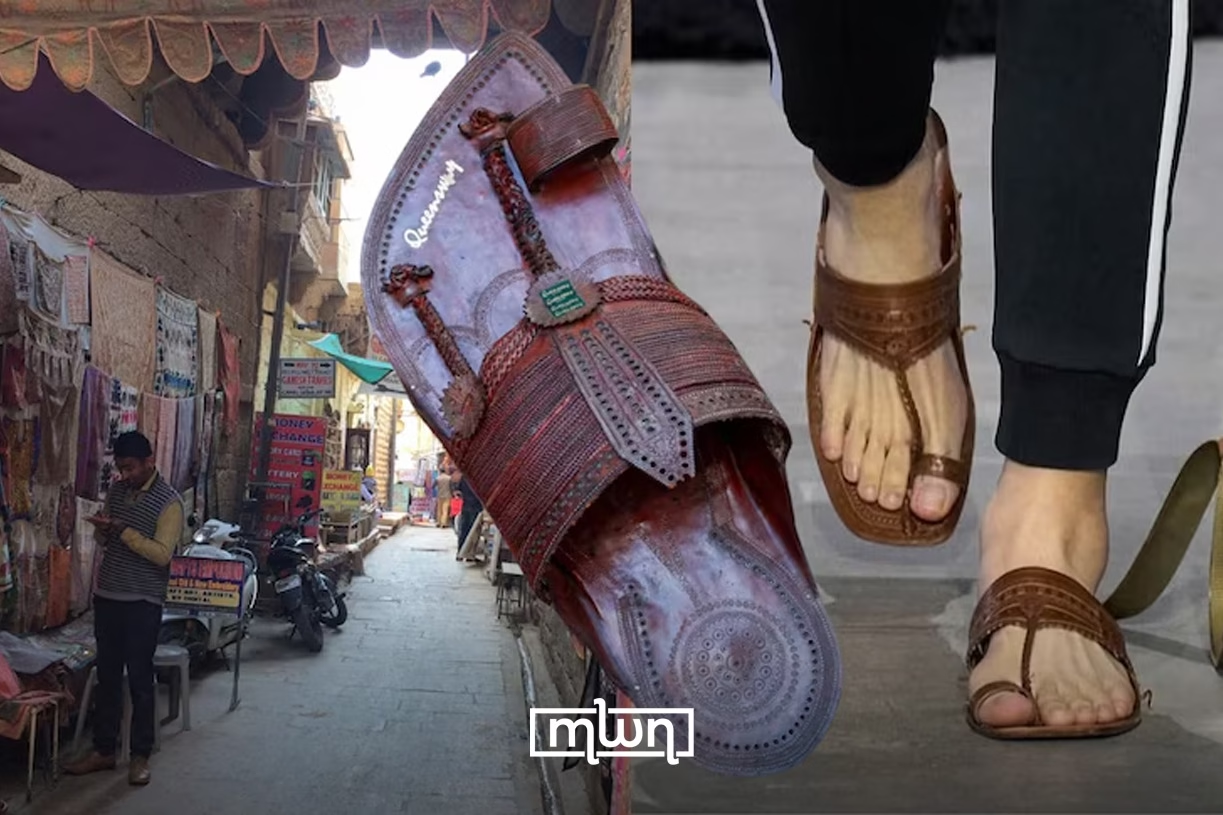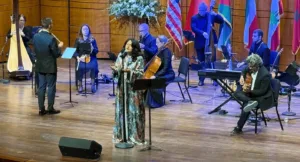Prada’s newest footwear design has revived the debate over fashion, ethics, and cultural ownership.
Rabat – Prada unveiled its Spring/Summer 2026 newswear collection at Milan Fashion Week last month and one specific item caught the attention of the public: it was a pair of open-toe leather sandals that were very similar to the Indian traditional Kolhapuri chappal.
This resemblance quickly ignited debate and backlash online, with Indian users noting the irrefutable similarities between the runway footwear and the unique handcrafted sandal native to the city of Kolhapur in Maharashtra.
A centuries-old heritage
Kolhapuri chappals are a popular and traditional item in India. They have been worn for generations and are handcrafted by artisan communities, many of whom come from marginalized Dalit backgrounds.
The design has received a Geographical Indication (GI) tag from the Indian government, officially linking it to Kolhapur and protecting its cultural identity within India’s borders.
Beyond symbolism, the sandals are a source of livelihood for thousands. Over 20,000 families in Maharashtra and Karnataka remain involved in their production, relying on centuries-old craftsmanship and local materials.
The appropriation controversy
Prada’s sandals, priced at approximately $1,200, appeared in Milan without any mention of Indian influence. In India, where authentic Kolhapuris are sold for as little as $10–$12, the sharp price difference and absence of credits fueled outraged calls for cultural appropriation.
Indian politicians, activists, and artisan groups quickly mobilized. BJP Member of Parliament Dhananjay Mahadik led a delegation of Kolhapuri sandal makers to meet with Maharashtra’s Chief Minister and announced a potential lawsuit in the Bombay High Court.
The Maharashtra Chamber of Commerce also wrote to Prada, demanding recognition accompanied by economic inclusion of local artisans.
Prada responds
According to the BBC, Prada issued a statement acknowledging the Indian origin and inspiration of their sandal in response to the backlash.
“We deeply recognise the cultural significance of such Indian craftsmanship,” Prada stated. “We remain committed to responsible design practices and fostering cultural engagement with local Indian artisan communities.”
But critics say the statement is weak and without impact. Fashion experts and industry observers argue that recognition must go beyond words.
Dr. Arshiya Kapoor, a professor at India’s MIT Institute of Design, called it a “surface-level acknowledgment,” and ethical fashion entrepreneur Priya Ravindra added that true respect would mean direct partnerships with artisan communities, rather than just PR statements.
A missed opportunity or the start of one?
Some artisans, like Harish Kurade from Kolhapur, remain hopeful that the exposure could benefit their craft. “Today, the world’s eyes are on our Kolhapuri chappals,” he said, suggesting that if Prada were to formally collaborate with Indian makers, the outcome could be mutually beneficial.
But for many others, including younger entrepreneurs and community advocates, the concern lies in structural exclusion.
Despite legal protections like India’s GI tag, there is no international framework preventing major global brands from using traditional designs to their own benefits.
“Luxury brands have a long history of borrowing from traditional cultures without giving due credit—until there’s a backlash,” said fashion entrepreneur Srihita Vanguri.
She advocates for long-term partnerships, fair compensation, and cultural origin labeling to prevent such situations from recurring.
What happens next?
As of now, Prada has not confirmed whether the sandals will go into production. Indian artisans and officials are awaiting further information—legal or otherwise—that could determine whether this controversy becomes another instance of cultural appropriation or the beginning of a new, more ethical model for fashion collaboration.
What has transpired and remains clear is that traditional craftsmanship continues to be the main source of inspiration by global brands.
The main requisition then is whether that value will ever fully benefit the communities that create and keep these traditions alive.
















